📈How Piggyvest Achieved Over 40k App Downloads From Content
Daniel Orubo, Head of Content at Piggyvest, shares how his team built the Grown Ups comic series and the Piggyvest Savings Report
Hi there.
Welcome to the 56 new subscribers who joined Marketing For Geeks since the last issue. Big thanks to everyone who shares MFG with their network.
Every month, I share 1 interesting thing, 3 actionable marketing insights that have helped me become a better product marketer, and 5 pieces of marketing that caught my eye.
P.S. I’m trying to get to know MFG’s readers more. Could you answer a few questions in this short form if you haven’t yet?
Also, if you’d like to join MFG’s WhatsApp community, please fill this form.
ICYMI: In my last issue, I wrote about when NOT to use comparison pages, how to avoid causing decision paralysis, and how to use the P4 Quadrant in planning product/feature launches.
In today’s issue, I’m doing something a little interesting.
I’m starting a new series, called Funnel Vision, where I do a deep dive with a top marketing or product professional about specific campaigns, projects, or products they’ve worked on. You’ll get a behind-the-scenes look into what it took to launch some of the most successful campaigns and products in Africa.
In this first issue, I’m deep diving into Piggyvest’s content machine, which is led by Daniel Orubo.
Let's dive in!
How Piggyvest Built A Stellar Content Machine
Daniel Orubo has almost a decade of experience in content creation and strategy. Piggyvest is Africa’s largest consumer fintech. What do you get when you cross the two?
Easy. You get Piggyvest, the cool kid on the block, a fintech product that has gained some of the highest earned media of African startups in the last year; with a cult fan base that has gone as far as creating fan art from its content.
In this first issue of Funnel Vision, I deep dive into how Piggyvest earned virality & brand love from its content, with words directly from the horse’s (Daniel’s) mouth. Specifically, Daniel and I spoke about 2 of Piggyvest’s most successful content projects; The Grown Ups comic series, and the Piggyvest Savings Report.
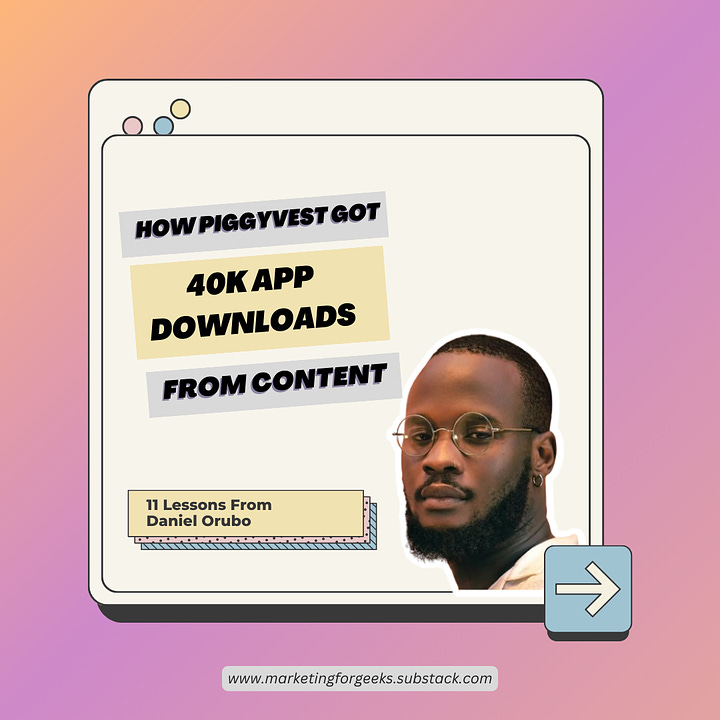
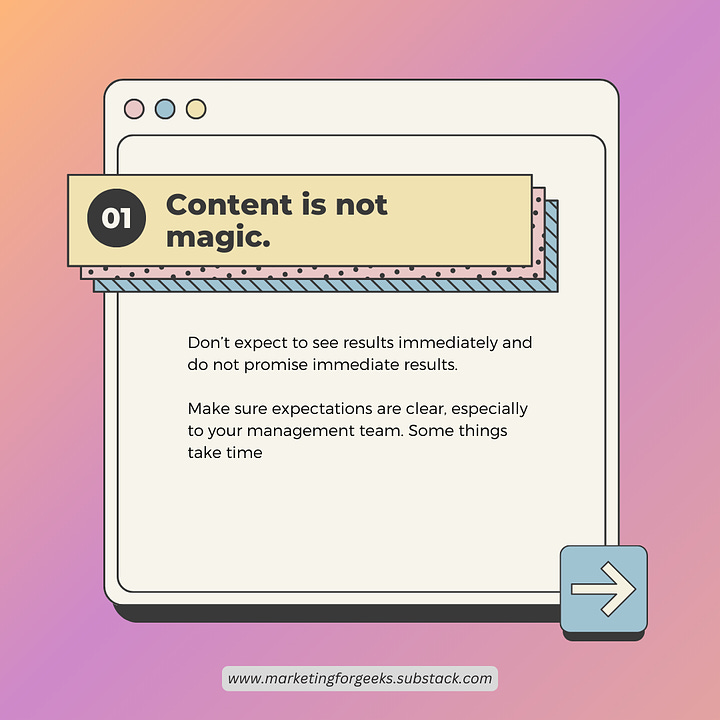
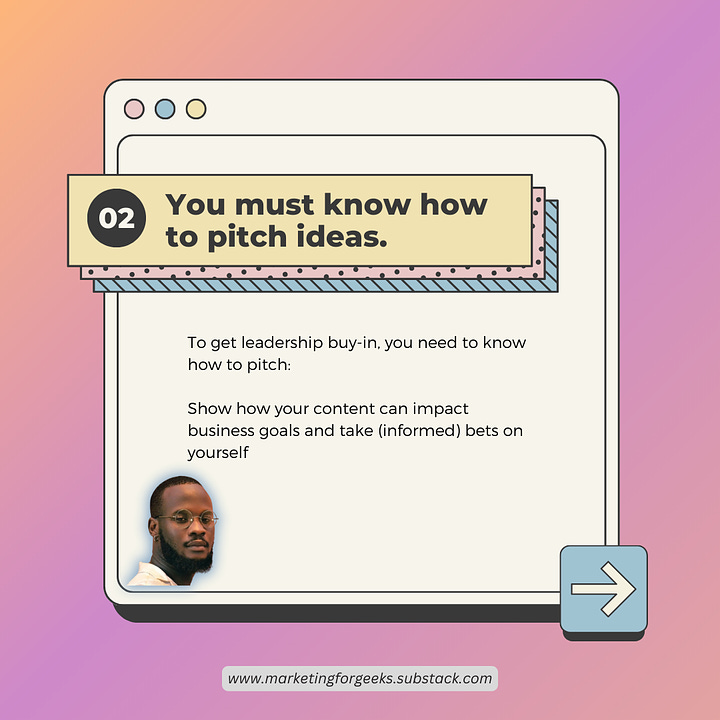

Quick Interruption: I shared 11 lessons from Daniel Orubo. You can find them by following me on Linkedin.
So what went on behind the scenes to result in the amazing content Daniel and his team produced? Like with most stories, we’ll start from the beginning.
The Beginning
I rewrote this section many times because I couldn’t decide what this story's beginning was. At first, I thought it was about the origin of the projects – how Daniel came up with the ideas. But in reality, the beginning of Piggyvest’s content success starts with a strategy document that Daniel shared with the management team right when he was about to get hired in 2021.
In the doc, Daniel explained why a content department was absolutely necessary for Piggyvest. That document laid the groundwork for all of Piggyvest’s content marketing success; from hiring superstar content creators to getting the freedom to run experiments like Grown Ups.
“I was building this department from scratch. I knew I was going to get in and start asking for things and I knew I'd need to start hiring. So I needed to be able to validate the [proposed] hires by tying them back to the promises I'd made. And the promise for me was to get more users, more brand visibility, more positive social capital, more readers, and more conversions. I think it's very important, as a content leader, to lay that kind of groundwork.”
As it turns out, content was an absolute necessity for Piggyvest, driving both traffic and conversions. But we’ll get to that.
Daniel also made a big bet on himself, by promising to get 50k visitors on Piggyvest’s blog within 3 months of getting hired.
The bet paid off. The blog passed 50k website visitors within just 1 month. That strengthened the foundation for the content team because it proved that content could deliver results. This wasn’t just talk– this was talk and do.
Setting Up For Success
The strategy document was just the building plan; next, Daniel had to begin laying blocks, starting with hiring a superstar team to help drive the results he envisioned.
And he managed to do just that.
“I think I have the best team on the planet. I know people say that all the time, but I genuinely think I do. I work with some of the smartest people I've ever met, and we all align. I'm really proud to have a team that I can trust wholeheartedly to execute because that’s the dream”
His hiring secret? He doesn’t look at CVs.
Daniel says he instead looks out for taste because you can’t teach taste. He asks questions about what kind of content applicants consume—you have to consume high-quality content obsessively to create high-quality content yourself.
Another strategy that helped him in those early days was hiring people who could do multiple things; people who had multiple talents and interests. His work as a content leader was then to give pointed feedback to help them tie their creative outputs to real business goals.
“In the beginning, there’d be ideas that were very funny but just didn’t serve the company or fit into the conversation. So, I’d say ‘I think this is a great idea. I think this would work in any other context. But for what we’re trying to do, I don’t think it works’.
When you’re coming from the media space, where the main goal is getting people to consume, it can be easy to forget [when it comes to content marketing] that the goal is to get people to know your business and patronise it. You can get carried away by a great viral idea. Then you get 100,000 people to engage with the content, but not a single person converts because it doesn’t tie back to your business.
So, it’s just constantly reminding them that the real star of this show isn’t your great ideas; it’s Piggyvest and its users. And the more I did that, the more the ideas they brought forth were more pointed. And now, they just understand.”
Culture of Trust
It was the combination of Daniel’s initial success and the brilliance of the content marketing team that allowed Piggyvest’s leadership to grant the team so much leeway to experiment in ways that many other African startups wouldn’t.
The proof was in the pudding, and what a tasty pudding Daniel had put on fire. It also helped that Piggyvest had a culture of trust in its employees; a culture that empowered and emboldened the team.
“The thing I love about Piggyvest is that they believe in themselves. Like, if they hired you, it’s because they trust that you know what you’re doing.
I remember the first meeting we had [about Grown Ups] was at Odun’s house, and we were throwing character ideas and she was giving feedback like ‘yeah, I like this, I like that’. It was just a lot of support.
And when you work at a place like that, it makes you more creative. It gives you courage to throw even your craziest ideas around.”
Piggyvest Savings Report & Data Storytelling
Research reports as content forms are hardly a new thing. Yet, social media lit up when Piggyvest released its 2023 Savings Report.
What was so special about this report? Why was it getting so much buzz?
The Idea
According to Daniel, the report wasn’t intended to be used externally, at least not at the beginning. Daniel simply wanted to do some user research to satisfy his curiosity about how Nigerians (Piggyvest users) were navigating the economic situation in the country.
But once he started working on the report, he knew it HAD to go out. Daniel believed that data was very important for making people feel seen and represented. And he was right. People did feel seen & represented.
The most impressive thing about the savings report was that it was built completely in-house. Daniel mentioned that he initially reached out to a research firm, but the amount they quoted was more than the entire marketing budget for the year.
The Execution
One of the toughest parts of building research reports in-house is collecting the data and getting a representative sample size. Companies typically try to increase the number of respondents by adding an incentive, but the Piggyvest team decided against doing that because they had just launched anti-fraud communication and didn’t want to confuse users.
Sending out surveys without an incentive only made the work harder, so the team had to be intentional about building out the survey questions. There were so many questions to ask, but too many questions would turn off the user and cause drop-offs. So, instead, Daniel created some dynamism in the survey questions.
“One thing I got out of working at Zikoko and interviewing 500+ people is that I know how to ask questions. I know the kind of questions to ask to make people share, so that informed the questions we asked. And I was very picky about the questions not being too much so people didn’t get bored halfway. So we tried to make the questions as engaging as possible and we also did a lot of logic linking. So if you say no to a certain question, there are some questions you won’t see. We also gave people a lot of options and allowed them to type in an answer if they wanted. That was where the data cleaning got really hard, of course.”
Because this was a research project, the content and data teams had to collaborate. The data team helped select a randomised sample size and made sure the data collection & analysis followed the right processes. But the content team did the work of analysing the data and telling stories with it.
Deciding which stories were worth telling took a lot of meetings. The team had to decide what data stories were compelling enough.
“It was one of the most stressful things. It was me, Bolu (content marketing associate), and Kelvin (editor at the time). We’d sit on a call for hours day by day, breaking down the data and deciding what was interesting enough to be a part of the report. So there were some things we gleaned that didn’t make it to the final report. Even stats that we thought were very interesting. It was a process of getting data, deciding what was relevant, what was important, and what made for a compelling story when tied together. And that took us blocking out time and basically losing our minds on the call. But it was very worth it.”
The Output
Hours of work went into creating the report that we all saw. Multiple teams were involved. Daniel said he turned a little insane during that period because he wanted things to come out perfect. When he felt like he was being too nitpicky, his boss, Piggyvest’s CMO, reminded him that this was his project to own. That emboldened him to stick to his guns to get exactly the output he wanted. The report itself went through many design iterations because of this.
“I wanted it to be an experience people would remember; something I and my team would be proud of. The first design didn’t work for me at all and we went through about 5 design iterations.”
And now to the part that made the report even more special – the live page. The more the team worked on the report, the more they worried about whether people would read it. That was when Daniel had the idea to take some of the interesting insights and distill it into an interactive web page.
“We were scared that people wouldn’t want to read the full thing, and because of that, they would lose out on all the insights. That’s how we had the idea to make two versions of it. We wanted clarity; we didn’t want to create something that was just for finance bros. I wanted everybody to be able to engage with this and come away with something. That was the driving force for me.”
Of course, no one would spend so many resources on a project without tracking results and testing that everything worked.
“It’s like ‘okay, you’ve created something, but are we tracking the right things? Are we tracking conversions? Are we tracking how people are navigating the pages?’
We were also doing a lot of testing. I got all the people around me involved. I’d just send it to them like ‘test it on your phone, is the flow nice?’ I’d send to someone with an iPhone, someone using an Android, someone using a Big Mac PC, someone using a smaller laptop. I needed everybody to test it, to make sure that the experience was solid for every single person.”
It was all worth it. In the end, over 120,000 people visited the report page, with over 20,000 people downloading the PDF report.
Grown Ups
The popular Supa Strikas comic series was one of the first indicators of a comic culture in Nigeria for many of us. Supa Strikas is now largely obsolete, and for many people, so is the comic culture in Nigeria. But Daniel noticed a rising trend in readership of Webtoons in Nigeria and theorised that the comic-reading culture in Nigeria was still alive, especially among younger Nigerians.
And so Grown Ups was born. For the uninitiated, Grown Ups is a comic series launched by Piggyvest in 2023. It follows the financial mistakes & successes of a friend group of 4 young Nigerians. The comic series has now been read by over 500,000 people.
Grown Ups was a project that required a lot of creative energy with inputs from multiple people. In fact, on average, Grown Up issues have 5 people working on them.
Daniel says the team held a weekly brainstorming session to develop story ideas. These sessions involved a lot of back-and-forth, with many ideas being cut. But Daniel doesn’t have veto power in these sessions; it’s a democracy and the majority takes the win.
“I’m not the kind of leader who needs to be right all the time. Sometimes I say ‘I don’t agree with this’ but I’ll put it up to a vote. I ask ‘Do you guys think it works?’ If everybody else says yes, I’m like ‘Go for it, I guess I’m the one in the wrong here.”
If you’ve managed creative people before, you probably know how easy it is to go down a rabbit hole of ideas and then struggle to find your way back up. Daniel solved for this during the brainstorms by having a designated script editor/supervisor, whose job it was to keep the story together and flowing.
“We had someone who typically writes for the blog, but for Grown Ups, she was the script editor. Her job is to say ‘Does this thing match what we said in season one? Is this timeline correct?’’ Sometimes, we throw ideas around and suddenly we’ve moved to a different planet. So Tobe [script editor] is always there to ground us and make sure we’re not flying off the handle in terms of continuity. That’s one of the things we did to make sure we were consistent, because ideas are always flowing and it’s very easy to get sidetracked.”
The Grown Ups characters resonated with many people and part of the reason is that the characters were well-defined. Daniel says this is something the team did intentionally.
“We didn’t want to force certain outcomes. We just wanted to define our characters really clearly, then throw them in different situations. Then we allow them to navigate it in a way that feels true to the characters. So we never had set agendas for how these characters behave and that’s what makes it fun. We’re just like ‘okay, if this character who is so obsessed with money gets put in this kind of situation, what would happen? And we just go from there”
Content Repurposing & Distribution
Both Grown Ups and the Savings Report were such viral projects that I had to ask Daniel about his approach to distribution, especially since Piggyvest largely leads with organic rather than paid marketing. Daniel says one thing that the team does (apart from optimising for search) is to make their content inherently shareable and then nudge people to share every chance they get. Daniel specifically referenced an insight from a previous MFG issue, about how people don’t always remember to share good content. So sometimes, the team adds in an incentive to share.
“One of the things that we did for Grown Ups that really helped was offering people the chance to win merch if they share. That shot up the number of shares we were getting and increased the number of people that visited.
And for the Savings Report, we made it inherently shareable. For stats that we thought were interesting, we allowed people share directly. And on the day of release, Piggyvest was trending because of that little share button. We try to constantly give prompts to share.”
Another strategy that helped the team, especially for Grown Ups, was the community they built around projects. Daniel says that community is important in any work that you do, because those are the people who would advocate for you. He recommends actively nurturing and rewarding community members (like Piggyvest did with its Grown Ups event).
“There’s a community of people that subscribe to the Grown Ups newsletter and they get it before everyone else. They’d always respond to emails saying how they loved issues and how they were sharing it. And so, we decided to create [an event]; something that brings these people together so they can talk to us, the creators, and we can listen to them. That event was such an eye-opener, hearing people talk about the project.
There was a fan who said she forced 2 of her friends to download Piggyvest because of the project. She said that a company that could create something like this that is so honest about money is exactly the place you should want to keep your money. And I was wowed. That sells Piggyvest better than anything I could have said.”
In general, Daniel believes that content is an investment and you should try to get as much mileage as you can from it. This means he thinks about how to cut costs to increase ROI, but it also means he’s always thinking about how to repurpose projects to reach even more people. This includes digital efforts (like quizzes, short-form articles, videos, and emails) and physical ones (like the Grown Ups event and the Finance Roundtable held after the report).
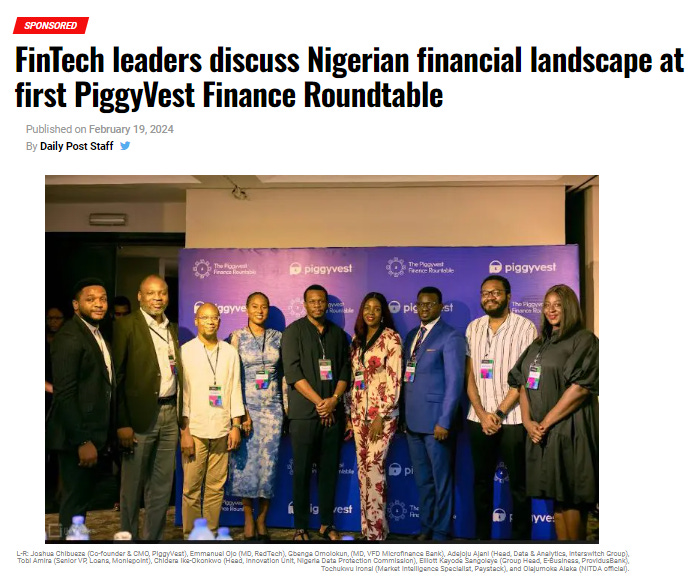
“We’re constantly thinking about the ways we can engage that still feel true to what the business does. We do quizzes, so if we want to do a quiz about Grown Ups, it doesn’t feel out of place. Piggyvest likes hosting events [and so we held events]. We always try to think about what we can do that tie into what the brand already does so we can engage people and keep the momentum lasting a bit longer.”
Balancing Storytelling & Conversion
Stories are great, but they don’t always lead to results. Yet the Grown Ups comic series led to over 40,000 downloads of Piggyvest. I couldn’t end the interview with Daniel without asking how he manages to balance compelling stories with real results; conversion metrics like sign ups, as opposed to more vanity metrics like views.
The first thing Daniel disillusioned me of is the belief in binary comparisons of conversion metrics and vanity metrics. He explained how the path to conversion isn’t always a direct line; sometimes people need more content before they convert.
“You don’t have to use every single opportunity as a time to sell. Sometimes, you can just introduce something else. It’s not every time you ask a visitor to download the app; sometimes just tell them to join your newsletter. Allow them to go on a journey; you can’t expect them to convert immediately after engaging with you once.
It’s about being able to know when to use a different prompt. For us now, that’s getting people to join our newsletter. We then push at least two ads on the newsletter. And these things have been converting. That’s the power of content. You can take people on a prolonged journey.”
Daniel explains that it's important to make these expectations clear to management as well, so they don’t expect magic within a few weeks.
That being said, Daniel says that content can lead directly to conversion when you utilise product-led content. It’s a philosophy that Daniel strongly believes in and has trained his team on. With product-led content, content teams can use emotional stories to sell products; by showing people the direct impact of the product on people’s lives.
“Product-led content is about making your products such an integral part of the story you’re trying to tell and that’s what really makes it convert. It’s about finding the right positions and opportunities to put these things in.
For example, we started this new series called PiggyFirst, which follows people who have used Piggyvest to do something monumental for the first time. We put our first story out and it has done really well; the conversion from that story has been higher than most other content. And that’s because it’s very direct about how Piggyvest fit into this person’s life and fundamentally changed it. So that’s how storytelling can convert.
I think content marketers need to embrace the product a lot more and show how [the product] can actually help people by telling those stories. That’s how you do something compelling that also meets business goals.”
And that’s it. That’s the playbook behind “the Daniel Orubo effect” and how exactly Piggyvest’s content team manages to churn out such high-quality viral content.
📣Tweet about this.
You can see more of Daniel on LinkedIn, Twitter, or his personal website.
P.S. If you’d like to read the full transcript or listen to the recording of my conversation with Daniel, you can check that out here:
What project, product, or campaign should I focus on next? Feel free to recommend a project you love (could be one you worked on even) by leaving a comment.
What I’m Reading
The Growth Vault by Demand Curve — Definitely stealing this tactic soon for Marketing For Geeks. Love it.
Your ultimate guide to affiliate referrals for B2B SaaS
Did you enjoy this issue? Give it a ❤️ and let me know in the comments section.
Even better, share this with someone.

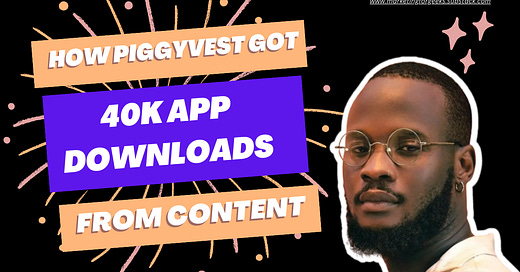




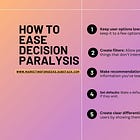


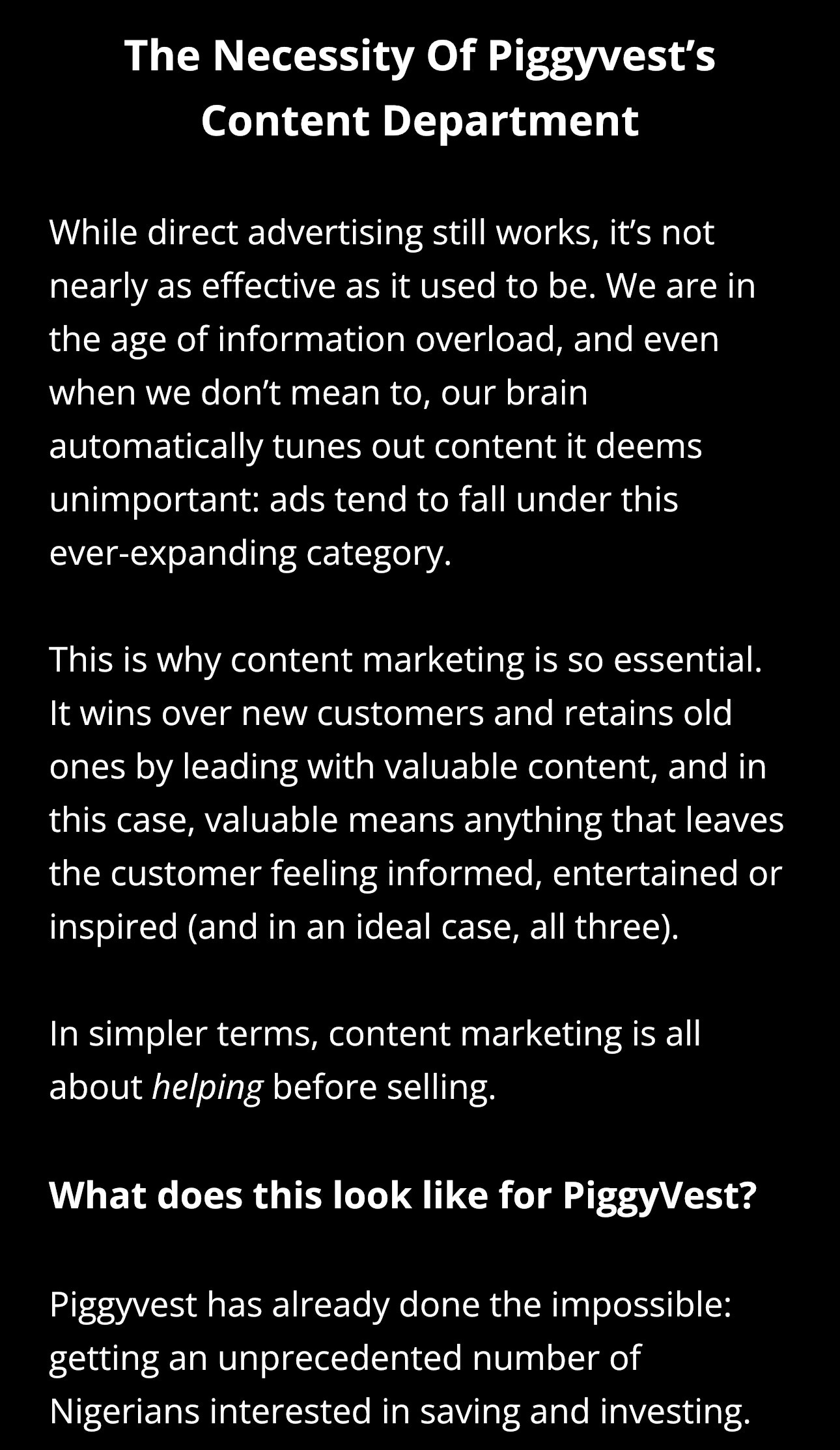
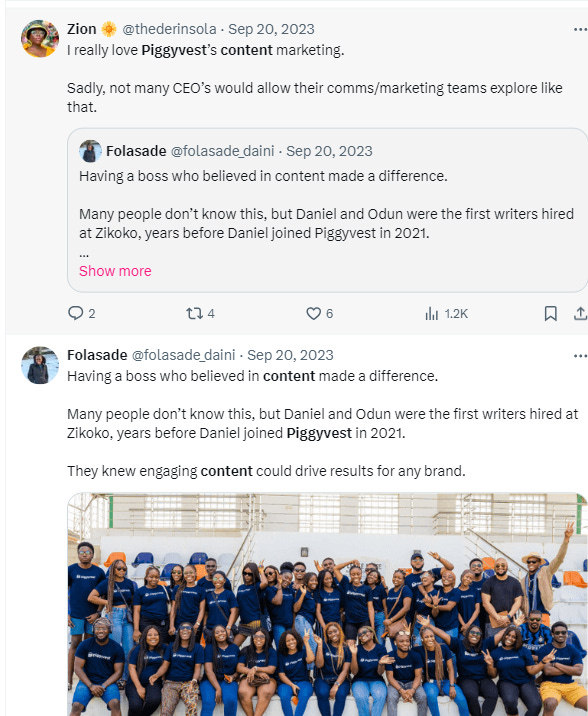
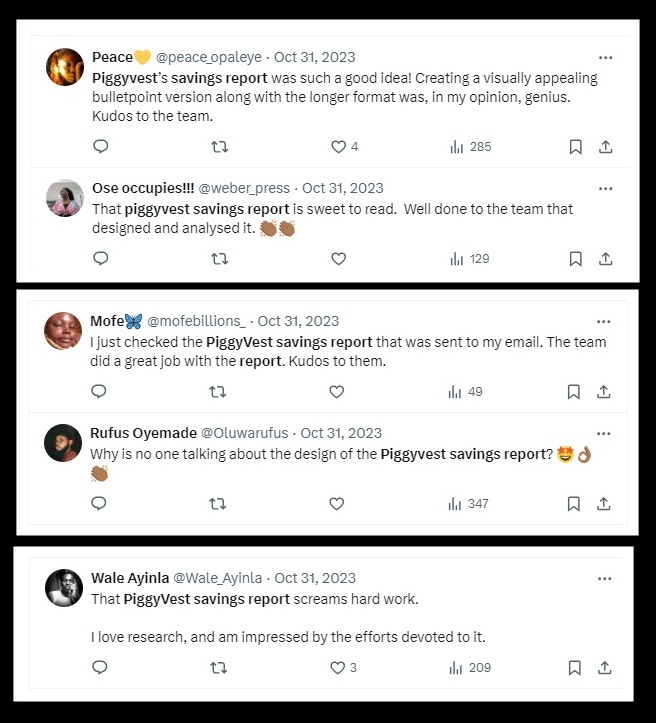

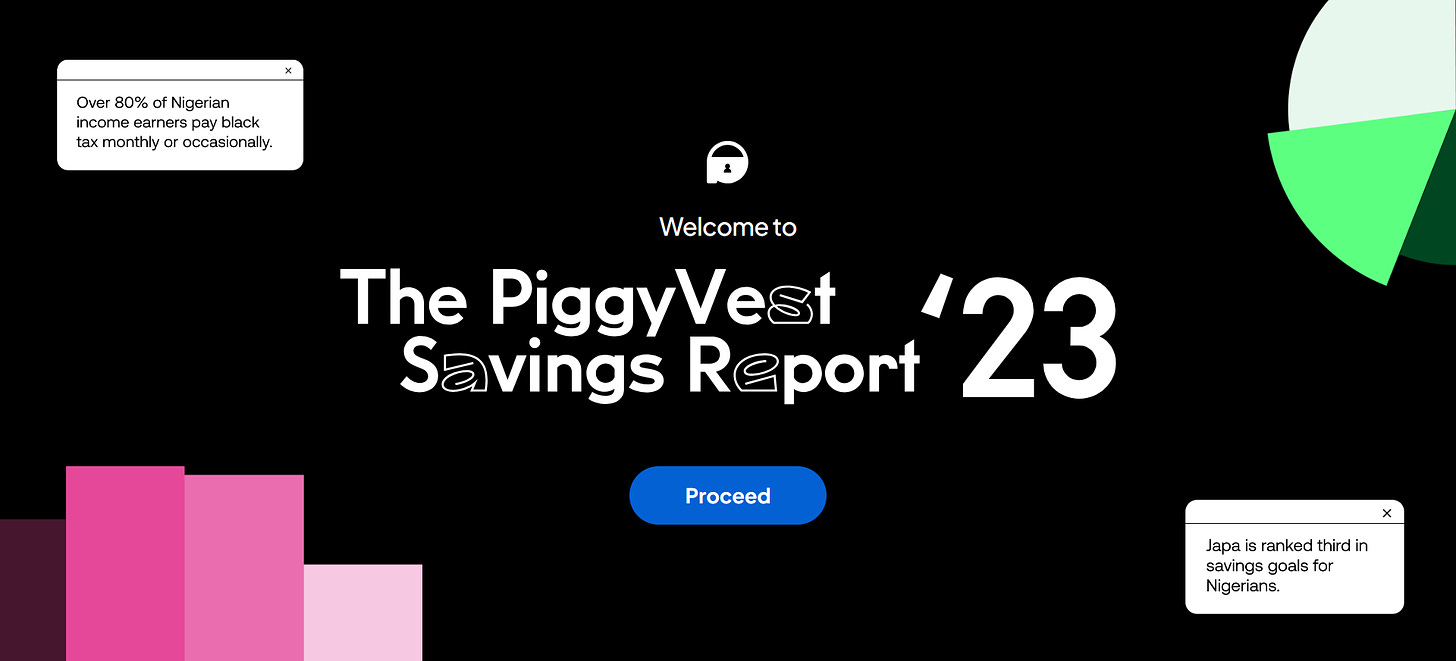
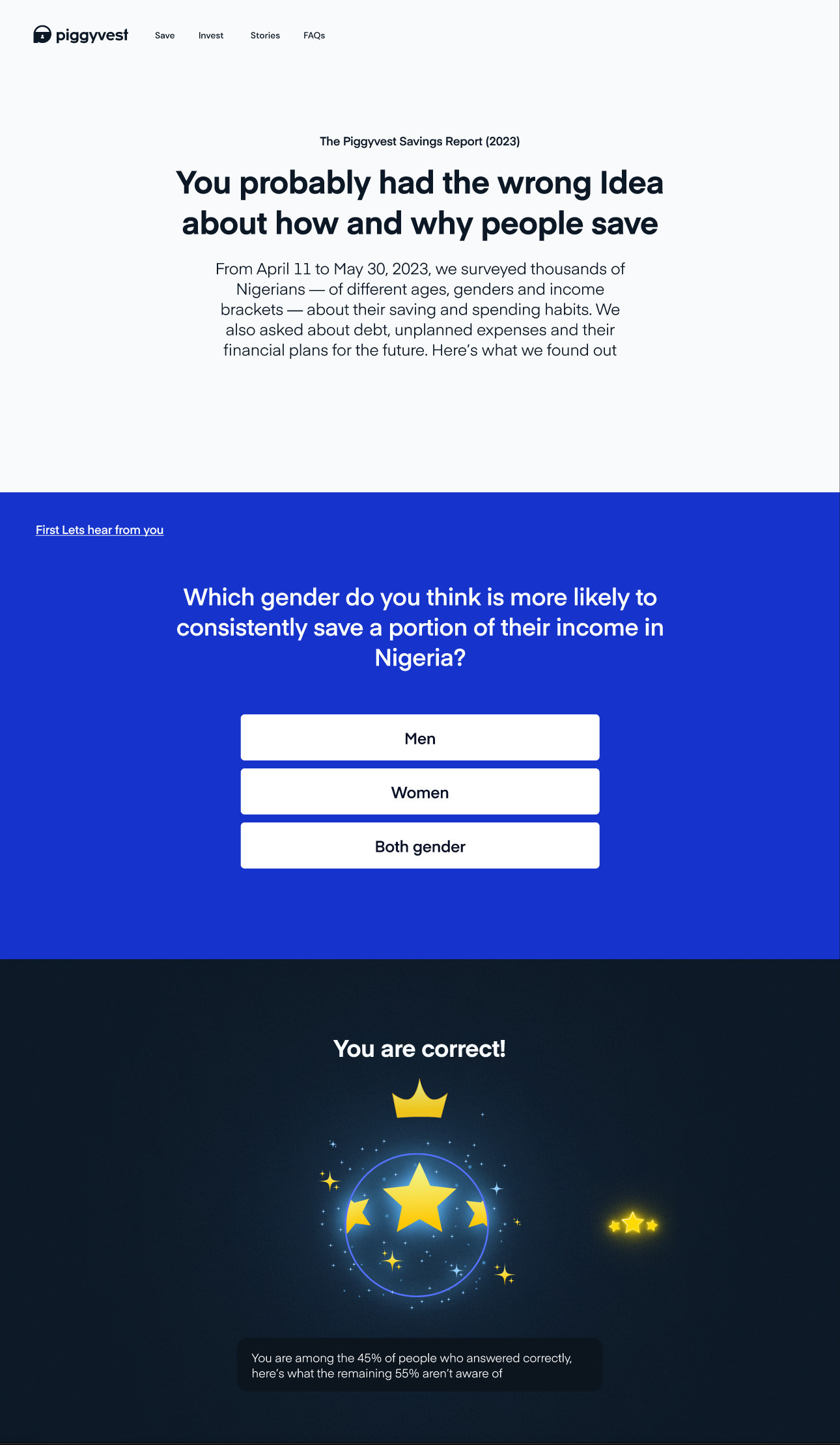

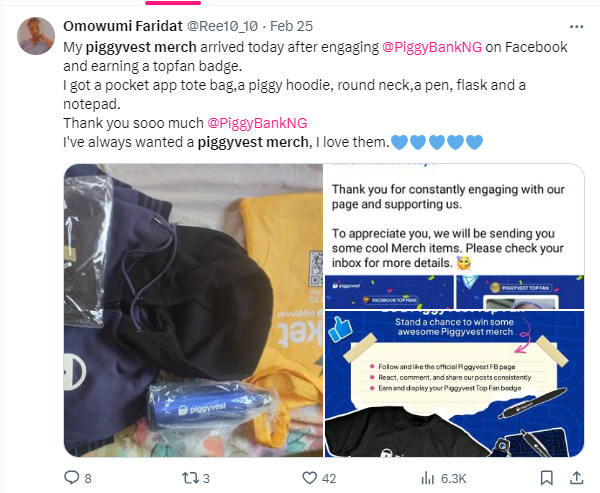
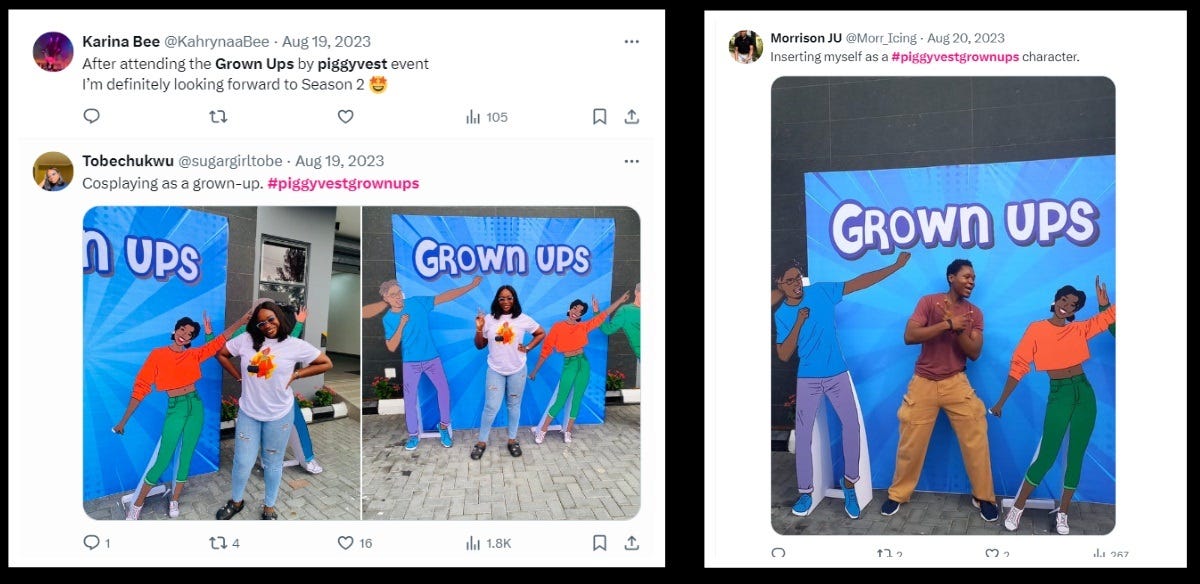
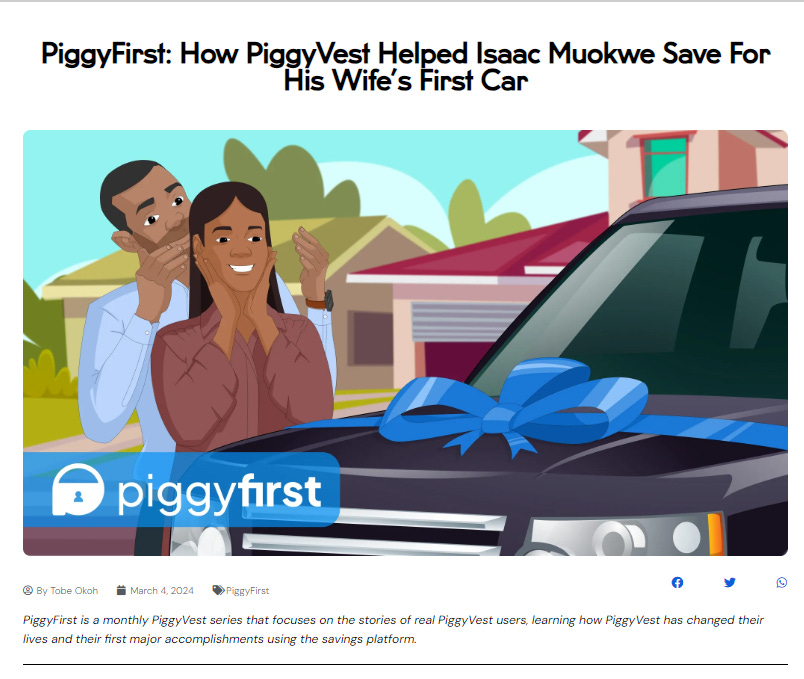



Let's not lie, let's not steal- Lade shares the most resourceful nuggets and reading this from Daniel's story just proves to me that telling relatable stories for a brand don't just help sell the brand, it helps the audience to feel seen and appreciated. Thank you so much for this insightfu piece Lade
Such an insightful read! I have been reminded again that when it comes to content marketing, conversion may not happen immediately but as long as you have your audience's attention and you continue to help them, you build trust.